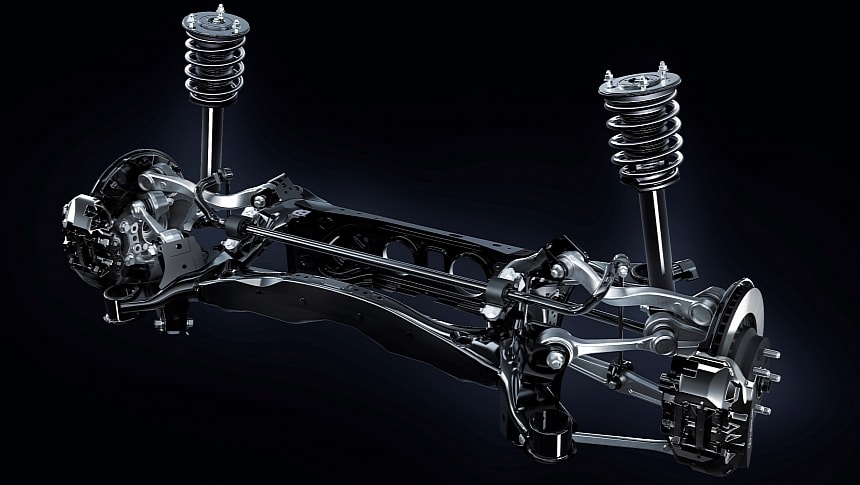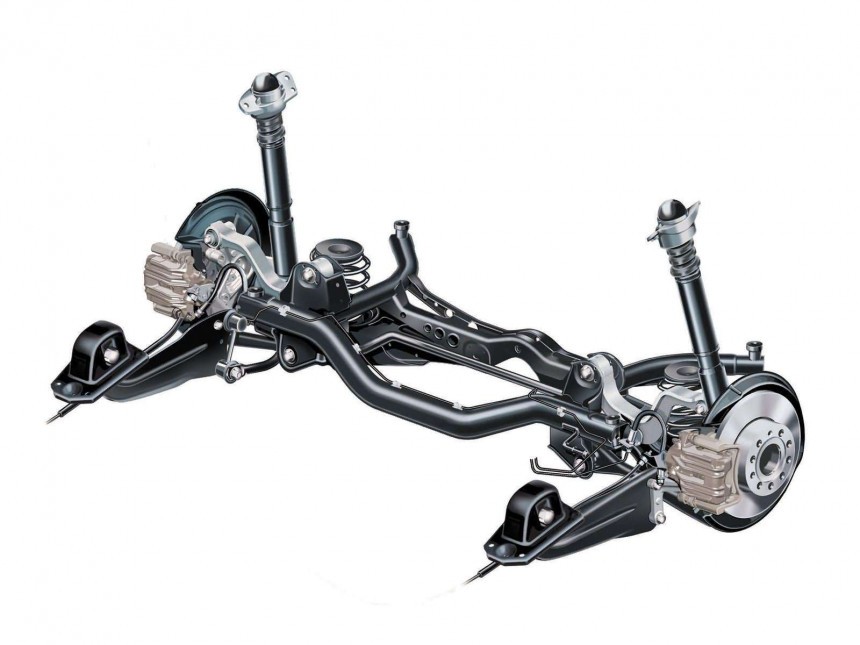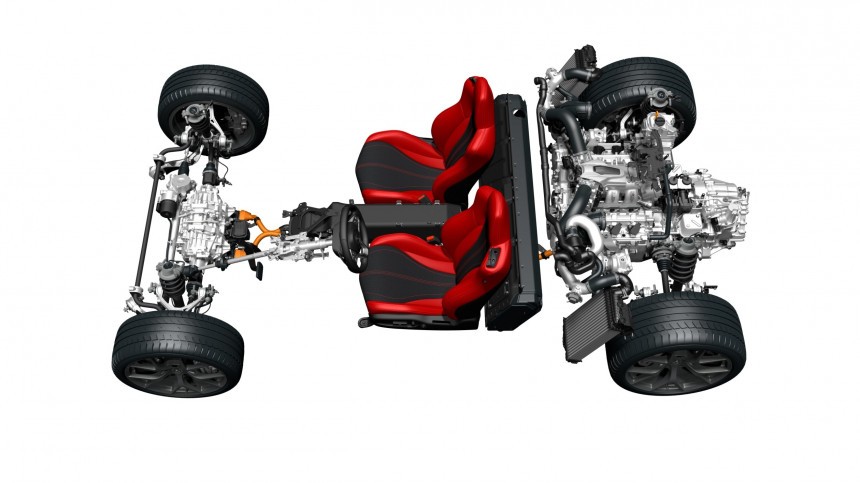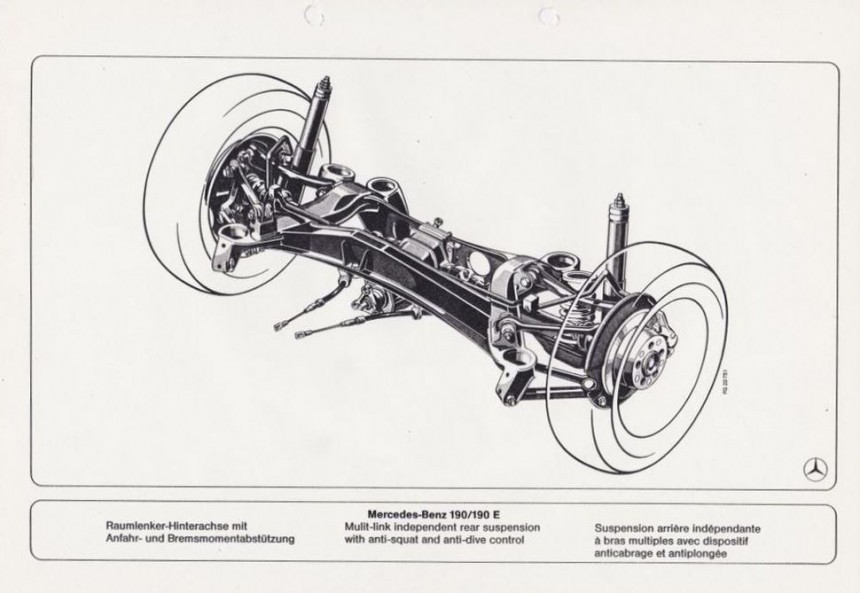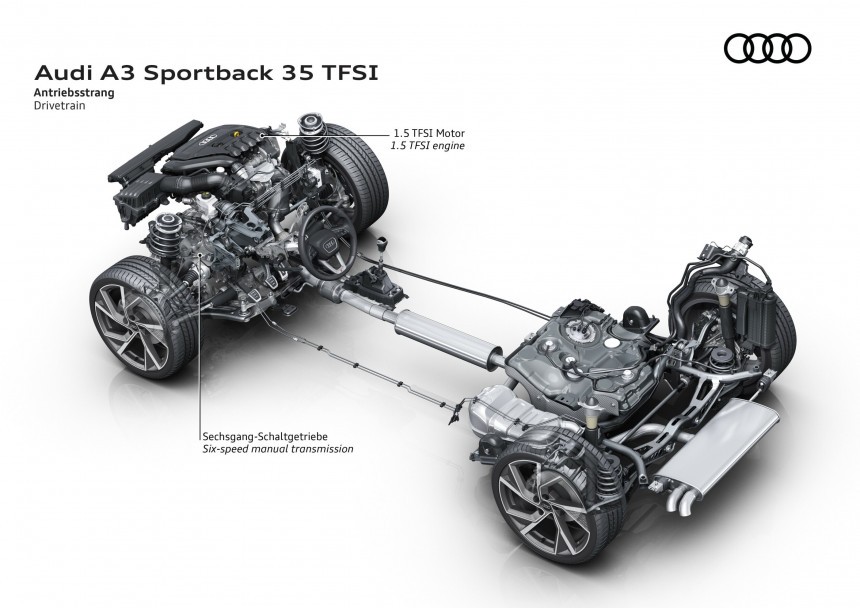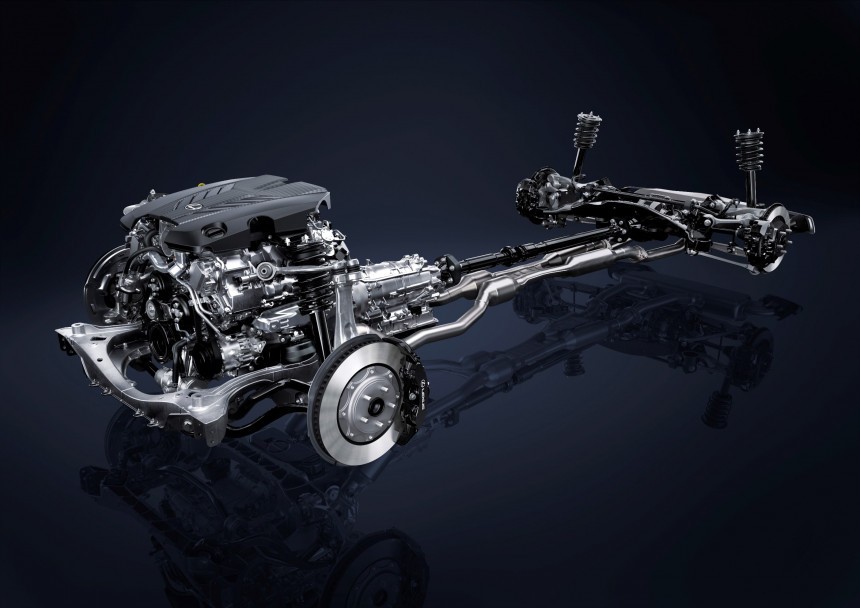The suspension system of a road-going vehicle has two main purposes. Filtering out unwanted motions that occur in a moving vehicle is one thing, but the suspension system also improves handling and stability in all imaginable driving scenarios.
Put simply, automotive suspension comprises the linkages, springs, and shock absorbers that connect the vehicle's chassis to the wheels. Even the most non-car people out there know that suspension systems are not created equal, and one could argue until tomorrow about which layout is better.
The multi-link suspension is preferred by most automakers for the majority of road-going applications, but why? To answer that question, we first have to understand why the multi-link setup is better than other independent suspensions.
Before going into that explanation, we should talk about semi-independent and fully dependent suspensions. First and foremost, solid axles define the latter category. Full-size pickup trucks usually feature this kind of dependent suspension because it's better for towing and hauling stuff than semi-independent and independent suspensions.
Econoboxes use torsion beam-style rear suspension, whereas the Ford Maverick combines an independent front end (MacPherson struts) with a semi-independent rear end in the form of a twist-beam rear axle with twin-tube shock absorbers. All-wheel-drive versions, on the other hand, replace said twist beam with multi-link suspension.
Slotted right above MacPherson struts, the double-wishbone setup consists of two wishbone-shaped arms with different mounting positions at the wheel and on the chassis. The most obvious advantage of a multi-link system is that engineers can give it more links. Gifted with three, four, or even five arms, the multi-link design is better than double wishbones because you can alter a suspension parameter without affecting a different one.
That's not possible with double-wishbone designs, and multi-link suspension further sweetens the deal by keeping the vehicle's tires perpendicular to the road for maximum road-gripping performance. However, the higher complexity of the multi-link design also results in a higher number of potential failure points and increased production costs.
Derived from the double-wishbone system, the multi-link variety of independent suspension features lateral and longitudinal arms with spherical joints or rubber bushings at their ends. The arms are joined at the top and bottom of the spindle, which is the part that carries the wheel hub and bearing.
When the spindles turn while steering the vehicle left or right, it alters geometry by torquing all suspension arms. Don't worry, though, as the pivot systems are designed to allow this. Multi-link arrangements are used on both the front and the rear suspensions, although multi-link front ends replace lateral arms with a tie rods that connect the rack and pinion rack or steering box to the wheel hubs.
Multi-link suspension traces its roots back to the 1960s and Mercedes-Benz. The C111 series of bite-the-back-of-your-hand beautiful prototypes opened the floodgates, only for the 201-series 190 to premiere said multi-link setup in 1982. Mercedes originally intended to debut multi-link suspension in 1979 with the 126-series Sonderklasse, but alas, there wasn't enough time to fine-tune the multi-link suspension for that generation of the S-Class.
Although Mercedes isn't exactly a byword for attention to detail and quality nowadays, "the best or nothing" isn't merely a cringe-inducing advertising slogan. It fully applies to the suspension layout of the Mercedes 190, for the back end uses a five-link design. Up front, the W201 rocks MacPherson strut-type suspension. The iconic 190 is furthered by anti-roll bars at either end, plus anti-squat and anti-dive geometry for good measure.
The multi-link suspension is seen as the best independent system for automobiles because it's the best compromise between handling, comfort, and packaging. What's more, such a suspension allows a vehicle to flex more, thus making the multi-link design a good solution for sport utility vehicles.
Not exactly a coincidence, the most popular SUV in the United States of America flaunts a multi-link rear suspension. Named after Earle Steele MacPherson, the MacPherson strut-type front suspension of the Toyota RAV4 doesn't intrude into the engine compartment as much as a multi-link arrangement, making it ideal for front-biased vehicles with transversely-mounted powerplants.
Because of their front-biased platforms, even the hi-po Audi RS 3 and Mercedes-AMG CLA 45 use MacPherson struts up front and multi-link designs for the rear end. The V6-powered R35 Nissan GT-R, by comparison, features double wishbones for the front wheels and multi-link rear suspension.
Double wishbones are preferred in high-performance vehicles based on rear-biased platforms. While it may offer less design choice than a multi-link system, double wishbones offer good camber control and more rigidity. Multi-link suspension designs may experience changes in alignment during suspension travel, which explains Lamborghini's preference for double wishbones fore and aft in the 1,001-horsepower Revuelto.
In the case of the 992-generation Porsche 911, most Neunelfers come with MacPherson struts up front. The high-revving 911 GT3 and 911 GT3 RS, meanwhile, level up to double wishbones. Be that as it may, there is no clear winner between these independent suspension designs. The double wishbone has clear applications, while multi-link suspension is better suited for other purposes.
You also cannot blame the likes of Toyota and the Volkswagen Group for being cheap with their MacPherson strut-type front suspension because a MacPherson-style front end and a multi-link rear end is a much superior combination that MacPherson struts and a torsion-beam rear axle.
Still, you can blame Mazda to your heart's content for downgrading the Mazda3 from a multi-link rear axle to a torsion beam. The cost-driven change affects every other vehicle underpinned by the Japanese automaker's Small Product Group platform, beginning with the CX-30 and CX-50.
Thankfully, the Hiroshima-based automaker didn't cheap out on the Large Product Group architecture of mid-size, rear-biased utility vehicles. Just like the Aston Martin Vantage and the punchier DB12, the CX-90 and friends combine a double-wishbone front suspension with a multi-link rear axle.
The multi-link suspension is preferred by most automakers for the majority of road-going applications, but why? To answer that question, we first have to understand why the multi-link setup is better than other independent suspensions.
Before going into that explanation, we should talk about semi-independent and fully dependent suspensions. First and foremost, solid axles define the latter category. Full-size pickup trucks usually feature this kind of dependent suspension because it's better for towing and hauling stuff than semi-independent and independent suspensions.
Slotted right above MacPherson struts, the double-wishbone setup consists of two wishbone-shaped arms with different mounting positions at the wheel and on the chassis. The most obvious advantage of a multi-link system is that engineers can give it more links. Gifted with three, four, or even five arms, the multi-link design is better than double wishbones because you can alter a suspension parameter without affecting a different one.
That's not possible with double-wishbone designs, and multi-link suspension further sweetens the deal by keeping the vehicle's tires perpendicular to the road for maximum road-gripping performance. However, the higher complexity of the multi-link design also results in a higher number of potential failure points and increased production costs.
When the spindles turn while steering the vehicle left or right, it alters geometry by torquing all suspension arms. Don't worry, though, as the pivot systems are designed to allow this. Multi-link arrangements are used on both the front and the rear suspensions, although multi-link front ends replace lateral arms with a tie rods that connect the rack and pinion rack or steering box to the wheel hubs.
Multi-link suspension traces its roots back to the 1960s and Mercedes-Benz. The C111 series of bite-the-back-of-your-hand beautiful prototypes opened the floodgates, only for the 201-series 190 to premiere said multi-link setup in 1982. Mercedes originally intended to debut multi-link suspension in 1979 with the 126-series Sonderklasse, but alas, there wasn't enough time to fine-tune the multi-link suspension for that generation of the S-Class.
The multi-link suspension is seen as the best independent system for automobiles because it's the best compromise between handling, comfort, and packaging. What's more, such a suspension allows a vehicle to flex more, thus making the multi-link design a good solution for sport utility vehicles.
Not exactly a coincidence, the most popular SUV in the United States of America flaunts a multi-link rear suspension. Named after Earle Steele MacPherson, the MacPherson strut-type front suspension of the Toyota RAV4 doesn't intrude into the engine compartment as much as a multi-link arrangement, making it ideal for front-biased vehicles with transversely-mounted powerplants.
Double wishbones are preferred in high-performance vehicles based on rear-biased platforms. While it may offer less design choice than a multi-link system, double wishbones offer good camber control and more rigidity. Multi-link suspension designs may experience changes in alignment during suspension travel, which explains Lamborghini's preference for double wishbones fore and aft in the 1,001-horsepower Revuelto.
In the case of the 992-generation Porsche 911, most Neunelfers come with MacPherson struts up front. The high-revving 911 GT3 and 911 GT3 RS, meanwhile, level up to double wishbones. Be that as it may, there is no clear winner between these independent suspension designs. The double wishbone has clear applications, while multi-link suspension is better suited for other purposes.
Still, you can blame Mazda to your heart's content for downgrading the Mazda3 from a multi-link rear axle to a torsion beam. The cost-driven change affects every other vehicle underpinned by the Japanese automaker's Small Product Group platform, beginning with the CX-30 and CX-50.
Thankfully, the Hiroshima-based automaker didn't cheap out on the Large Product Group architecture of mid-size, rear-biased utility vehicles. Just like the Aston Martin Vantage and the punchier DB12, the CX-90 and friends combine a double-wishbone front suspension with a multi-link rear axle.
